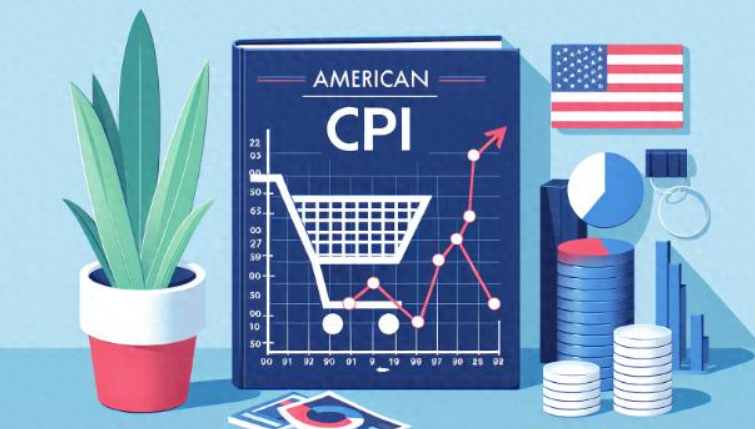US Core CPI Eases
Advertisements
In a significant development for the United States economy, the inflation report released on January 15, 2024, by the Bureau of Labor Statistics has indicated a noteworthy easing in core Consumer Price Index (CPI) figures for December. This has led many traders to speculate that there is now a stronger likelihood, estimated at around 50%, that the Federal Reserve may implement a second interest rate cut before the year concludes.
The inflation trends displayed in the report depict a somewhat mixed landscape. The seasonally adjusted month-on-month CPI for December rose by 0.4%, which marks a peak not seen since March 2024 and surpasses both market expectations and the previous month’s figure of 0.3%. The annual unadjusted CPI for December revealed an inflation rate of 2.9%, aligned with predictions, but up slightly from the prior month’s rate of 2.7%. More importantly, the core CPI that excludes volatile food and energy prices presented an unadjusted month-on-month increase of 0.2%, meeting market expectations while experiencing a cooling effect compared to the previous month’s 0.3% increase. The unadjusted annual core CPI dropped to a significant low of 3.2%, the lowest since August of the same year, slightly below analysts' forecasts of 3.3%.
Following these CPI revelations, futures traders demonstrated a clear inclination towards anticipating further rate cuts. The market reacted dramatically, with the dollar index plummeting by over 40 points—immediate evidence of increased selling pressure on the dollar. Simultaneously, spot gold surged nearly $10, buoyed by its safe-haven status and the dollar's weakening, reaching close to $2,690. Non-dollar currencies enjoyed a noticeable appreciation, with the British pound climbing over 60 points against the dollar and the euro following suit with a rise exceeding 50 points. In stark contrast, the dollar faced declines against the Japanese yen and Canadian dollar, reflecting a broader trend of dollar depreciation. U.S. stock futures also reacted positively, with the Nasdaq futures up by 1.52%, the S&P 500 futures gaining 1.31%, and the Dow futures increasing by 1.26%, suggesting a marked uplift in investor sentiment.

Before these CPI figures were disseminated, the year-on-year growth of the core CPI had stubbornly remained at 3.3% for four consecutive months, indicating persistent inflation challenges. However, the latest data highlights a downward trend, with the three-month annualized growth in core CPI now at 3.3%, a noticeable decrease from the preceding month’s 3.7%. While the current level still reflects inflation pressures, the fact that it ended a two-month rising streak could signal a transformative shift in inflation trends.
Examining the overall CPI context, energy prices have emerged as a critical factor, contributing over 40% to the monthly increase, with gasoline prices experiencing a notable 4.4% jump. The report also notes that housing inflation remains relatively tame, seeing a modest monthly rise of just 0.3%. Moreover, a specific segment known as the “super core” services—a crucial indicator of inflation—showed a mere 0.21% uptick, the lowest since July of the previous year, further substantiating claims of a cooling inflationary environment.
Chris, a respected analyst, asserts that the newly released CPI data is a beneficial sign for the Fed. He believes the figures indicate a cooling in inflation that could provide the Federal Reserve with greater flexibility in its policy-making. Nevertheless, the continued strength of the labor market, reflected in low unemployment rates and robust demand for labor, complicates a potential rate cut in the near term. According to him, substantial progress on inflation will be necessary before the Fed would even consider adjusting rates downward.
Predictions from seasoned U.S. economists, such as Aditya Bave from Bank of America, have also signified that no rate cuts are expected from the Federal Reserve for the remainder of the year. After the CPI announcement, he conveyed to Bloomberg Television that the data reflects a “positive figure” for inflation, suggesting some level of improvement. However, he stands firm that robust labor market dynamics and lingering uncertainties surrounding inflation would dissuade the Fed from making any aggressive cuts to interest rates.
Analysis by Bloomberg Industry Research's Ira F. Jersey and Will Hoffman highlights that market responses to the CPI report, which could be perceived as "meeting expectations," signal a collective sigh of relief among those formerly anxious over inflation rates trending upward. This reaction illustrates the market's sensitivity to perceived changes in economic conditions. Jersey emphasized that, given the overall strength of the economy, the likelihood is that the Federal Reserve may nearly have completed its rate-cutting cycle. He anticipates the possibility of one final cut in March, contingent on consumer spending showing tangible signs of contraction, which would provide the necessary ground to justify further cuts.
Post Comment